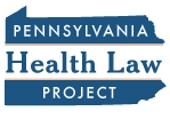“Medicaid Shortfall” Definition Changing?
The Medicaid and CHIP Payment and Access Commission last week discussed possible changes in how “Medicaid shortfall” is defined for the purpose of determining how much Medicaid disproportionate share money (Medicaid DSH) safety-net hospitals should receive.
The discussion came in the wake of a court decision last year that ruled that third-party payments toward Medicaid-covered services could not be included in hospitals’ Medicaid shortfall calculations.
 MACPAC commissioners discussed several statutory changes that would seek to minimize the impact of the court ruling:
MACPAC commissioners discussed several statutory changes that would seek to minimize the impact of the court ruling:
- Include third-party payments in the definition of Medicaid shortfall.
- Exclude from the Medicaid DSH definition of Medicaid shortfall all payments and costs for patients who have third-party coverage.
- Explore new rules that address different types of third-party coverage.
MACPAC is an advisory body whose recommendations to Congress are not binding but its views are respected and often find their way into future public policy.
This subject is important to Pennsylvania safety-net hospitals because all of them receive Medicaid DSH payments.
Learn more about MACPAC’s deliberations on Medicaid shortfalls and Medicaid DSH from the Fierce Healthcare article “MACPAC considers recommending change to definition of ‘Medicaid shortfall’ at safety net hospitals.”
 According to a Pennsylvania Department of Health news release,
According to a Pennsylvania Department of Health news release, Included in this edition are articles about:
Included in this edition are articles about: According to a new study published in Health Affairs,
According to a new study published in Health Affairs, increasing Pennsylvania’s minimum wage
increasing Pennsylvania’s minimum wage Some are implementing hospital or insurer taxes while others are increasing existing taxes on hospitals and health insurers. New Hampshire is directing part of the proceeds from a liquor tax for this purpose and other states have introduced cigarette taxes. Some are charging premiums to Medicaid beneficiaries and introducing work requirements for their Medicaid population so they can reduce overall enrollment. Many are using money from their general revenues.
Some are implementing hospital or insurer taxes while others are increasing existing taxes on hospitals and health insurers. New Hampshire is directing part of the proceeds from a liquor tax for this purpose and other states have introduced cigarette taxes. Some are charging premiums to Medicaid beneficiaries and introducing work requirements for their Medicaid population so they can reduce overall enrollment. Many are using money from their general revenues. Hospitals and health systems spent $99.7 million lobbying in Washington, D.C. last year, just barely more than in 2017 but much less than in 2009, when the focus of health care lobbying was the Affordable Care Act, then just a proposal and not a law.
Hospitals and health systems spent $99.7 million lobbying in Washington, D.C. last year, just barely more than in 2017 but much less than in 2009, when the focus of health care lobbying was the Affordable Care Act, then just a proposal and not a law. The report, from the Institute for Medicaid Innovation, focuses on how state Medicaid programs, through alternative payment models and especially through managed care organizations, have implemented new programs designed to address social determinants of health such as inadequate social supports and housing, food insecurity, lack of transportation, and others. It also highlights federal regulations that facilitate the implementation of new ways to address social determinants of health and presents brief case studies in which states, state Medicaid programs, and Medicaid managed care organizations tackle social determinants of health.
The report, from the Institute for Medicaid Innovation, focuses on how state Medicaid programs, through alternative payment models and especially through managed care organizations, have implemented new programs designed to address social determinants of health such as inadequate social supports and housing, food insecurity, lack of transportation, and others. It also highlights federal regulations that facilitate the implementation of new ways to address social determinants of health and presents brief case studies in which states, state Medicaid programs, and Medicaid managed care organizations tackle social determinants of health.